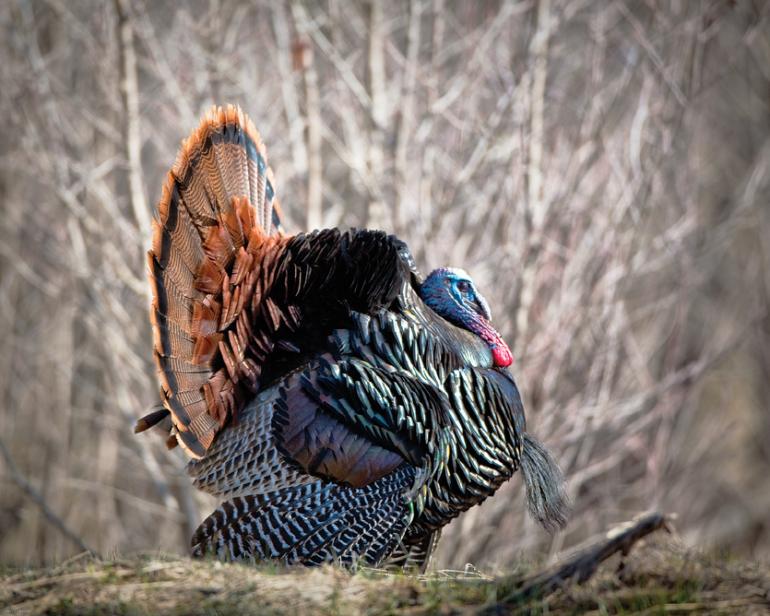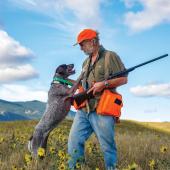Turkey Time
One beautiful spring weekend last year, I opted to head east to hunt down some Merriam turkeys. I had recently gotten permission from a friend at school to hunt his family ranch along the Yellowstone. Having never pursued Merriams before—only Easterns back in Kentucky—I was excited to add a new species to the hit list. My hunting buddies Keith and George eagerly joined the hunt and we wasted no time getting in the field.
As we began scouting the property, we realized this was quit an Eden for some of Montana’s greatest wild critters. We saw over a hundred mule deer, pheasants, and turkeys. It soon became clear that the majority of these toms were holding close to the river. As the sun set, we watched dozens of Merriams roost up in some big old trees. One problem: the birds were on an island and totally inaccessible from land.
Four a.m. the next morning found us loading decoys, guns, bows, and hunters into a canoe along the dark banks of the Yellowstone. As we set sail, I worried about capsizing in the dark in an ice-cold river. Knowing we had a good chance at collecting some Merriams, though, these fears quickly vanished. Thankfully, we reached the island safely and made our way toward the roost. We set up about 300 yards away and got ready for a long wait in the dark.
Finally we heard it: a big ol’ gobbler belting out a dominant gobble in our direction. That’s all it took—with that one sound-off, the whole forest came alive with other toms announcing their presence. That was more than enough to get my blood pumping. I responded with some hen yelps and clucks that kept the big boys fired up until sunrise.
About 15 minutes after full daylight, all gobbling stopped. I was worried. All of these birds were definitely off the roost, but were not in front of us. Did we set up too far away? Did I call too much? Where are they!? Another 15 minutes went by with no gobbling and no turkeys in sight. As my confidence faded, my eyes caught sight of something to my left. It was a big tom Merriam. He was only 15 yards away but I couldn’t move; he had me pinned. His attention was now on our two decoys.
He slowly crept by, not strutting at all—an indication that this bird was on high alert and ready to flee. For a split-second the gobbler put a willow thicket between his eagle eyes and my shotgun. I threw up my twelve gauge and waited for him to take one more step. He held at about 30 yards and I squeezed off a shot. Merriam down! Man alive was I excited. I jumped out of my hiding spot hootin’ and hollerin’ as I ran toward my quarry. We had done it. He was a 25-pound bird with an eight inch beard. None of that mattered to me, though. I was happy to have any bird in my hands!
This hunt was a success for several reasons. Without extensive scouting the previous day we would have had no chance to get close to these birds off the roost. Without a headstrong attitude and convenient permission to use the family canoe, we would have never gotten on top of these gobblers. And lastly, the teamwork it took to get across the river in the dark, cold morning as well as multiple callers closed the deal on this impressive first Merriam. By the end of the day we had two birds down and whole mess of new stories and memories.











